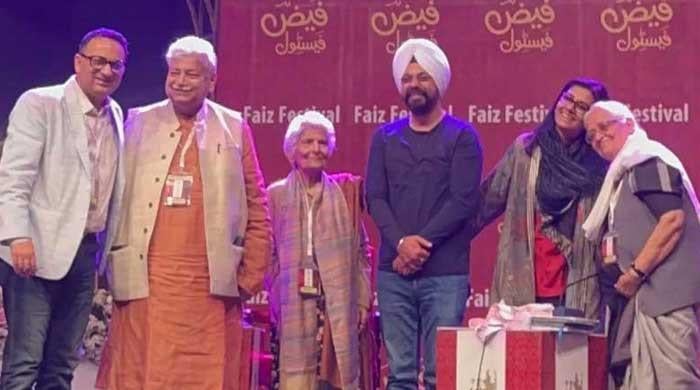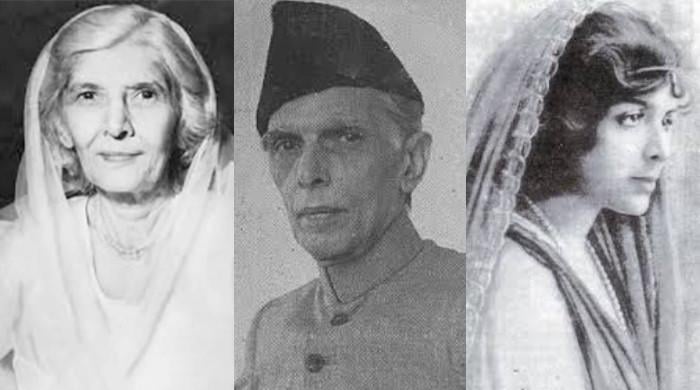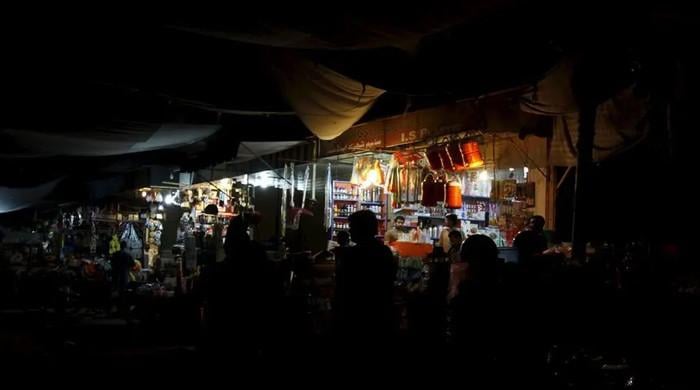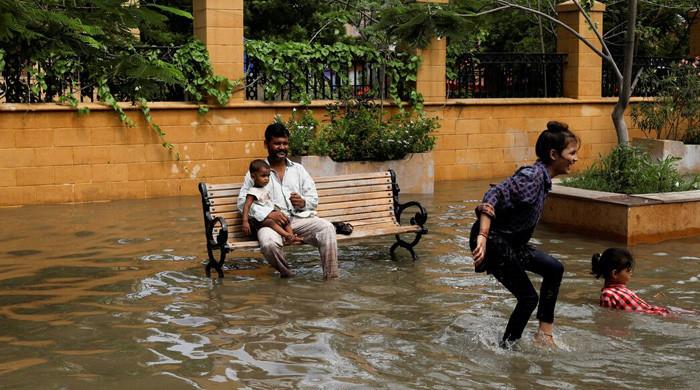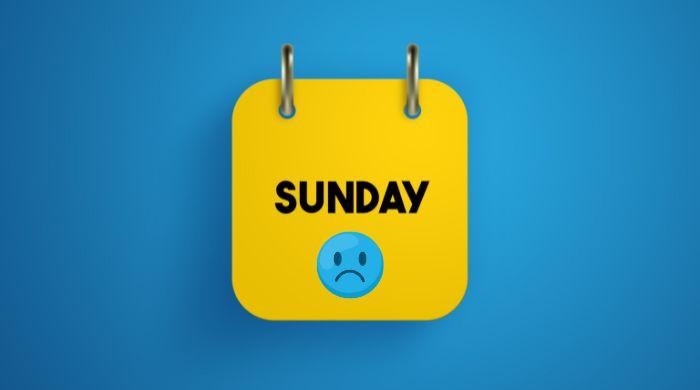Karachi: From fishing village to financial powerhouse
Karachi’s journey from a fishing village to a global financial hub is a story of determination, diversity, and constant evolution
April 25, 2025
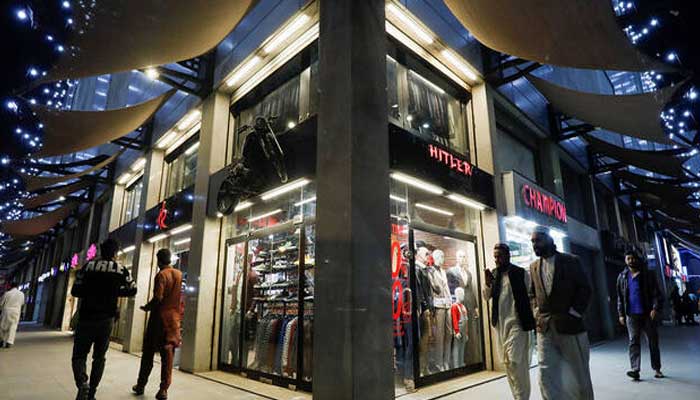
Karachi has a long economic history. Located on the coast of the Arabian Sea, its strategic position has always made it an important centre for trade, commerce, and industry. Over the centuries, the city has transformed from a small fishing village into a major trading port, and today, it stands as the financial powerhouse of Pakistan. This transformation has taken place over many decades, shaped by historical events, migration, government policies, and the entrepreneurial spirit of its people.
In the early 18th century, Karachi was a small settlement known for its natural harbour and fishing community. The British East India Company recognised its potential in the 19th century and developed its port facilities. After the British invaded Sindh in 1843, Karachi began to grow rapidly. Roads, railway lines, and port infrastructure were developed, and Karachi became a gateway for goods moving between the Indian subcontinent and the rest of the world. The city’s economy began to centre around shipping, warehousing, and the handling of imports and exports.
By the early 20th century, Karachi had become one of the most important ports in British India. It exported wheat, cotton, and other agricultural products from the interior regions to international markets. The port played a major role in supporting the British military during both World Wars, which further boosted investment in the city. The development of railways connecting Karachi to the rest of the Indian subcontinent also allowed goods to move more freely, turning the city into a hub of commercial activity.
Karachi’s transformation accelerated after independence in 1947. When Pakistan was created, Karachi was chosen as the capital of the new country, giving it political as well as economic importance. Thousands of migrants from India moved to the city, bringing with them skills, education, and business experience. This sudden rise in population created both challenges and opportunities. There was a huge demand for housing, infrastructure, education, and jobs. At the same time, the city’s industries began to expand to meet the growing needs of the new nation.
During the 1950s and 60s, Karachi experienced a period of rapid industrialisation. The government encouraged the growth of manufacturing, textiles, chemicals, and food processing. Industrial zones like Korangi and the Sindh Industrial and Trading Estate (SITE) were established to provide land and facilities for factories. Karachi’s port continued to serve as the main route for imports and exports, helping the city’s economy grow even further. Foreign investment started to flow in, and many multinational companies set up offices or plants in Karachi.
However, the 1970s brought some major challenges. The nationalisation policies of the government affected business confidence. At the same time, political instability and growing law and order problems began to affect daily life and investment. Despite this, Karachi remained Pakistan’s largest city and commercial capital. The service sector, especially banking, insurance, and media, began to grow as the city adapted to changing economic conditions. New industries such as information technology, telecommunications, and real estate started to take shape in the 1980s and 90s.
In the early 2000s, Karachi began to see another phase of economic growth. Market reforms and liberalisation brought a wave of private investment. The city became home to the headquarters of most of Pakistan’s major banks, financial institutions, and stockbrokers. The Pakistan Stock Exchange became the heartbeat of the country’s financial activity. The real estate sector also boomed, with high-rise buildings, shopping malls, and housing societies being built at a fast pace.
Karachi’s port also evolved. The city is now served by two major ports – the Karachi Port and Port Qasim – which handle majority of Pakistan’s sea trade. These ports support industries across the country by ensuring the smooth flow of goods in and out of Pakistan. In addition, the airport became a key link for international travel and cargo, further enhancing Karachi’s position as a global gateway.
In the fiscal year 2023/24, Karachi Port handled a total of 51.65 million tonnes of cargo, marking a 24.43% increase from the previous year. Export cargo reached 18.80 million tonnes, a 47.16% rise, while import cargo stood at 32.85 million tonnes, up by 13%.
Today, Karachi contributes over 20% of Pakistan’s GDP. It is home to the Pakistan Stock Exchange, the central offices of the State Bank of Pakistan, and most major local and international banks. The city has a vibrant business community and a growing number of startups in fintech, e-commerce, and software development. Shopping centres, restaurants, and international brands have made Karachi a centre of lifestyle and consumer activity. Educational institutions, media houses, and advertising agencies also play an important role in the city’s economy.
Despite its economic strength, Karachi faces several challenges. Rapid population growth has placed pressure on infrastructure, public services, and the environment. Issues such as traffic congestion, power shortages, and water supply problems affect daily life and productivity. Political and ethnic tensions have at times led to unrest, which impacts investors’ confidence. However, efforts are being made to improve governance, upgrade infrastructure, and encourage innovation in the city.
Over the years, the people of Karachi have shown great resilience and adaptability. Whether it is through small shops in neighbourhoods or large corporate offices in business districts, the people of this city continue to drive the economy forward. The mix of cultures, languages, and traditions gives it a unique character and creates an environment where ideas, products, and services can thrive.
Karachi’s journey from a fishing village to a global financial hub is a story of determination, diversity, and constant evolution. It is a city of contrasts – old and new, rich and poor, tradition and modernity – but it is also a city full of energy and ambition. With better planning, investment in infrastructure, and a focus on sustainability, Karachi can continue to lead Pakistan’s economy into the future. The road ahead may have difficulties, but Karachi will continue to rise as a powerful engine of economic growth.
The writer is a seasoned journalist and a communications professional. He can be reached at [email protected]




